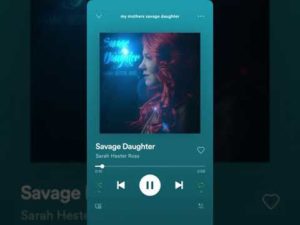Wow! I blinked and four weeks flew by! I would be lying if I said it was easy. My first week was an overwhelming feeling of exhaustion, self-doubt, and uncertainty. The class I was placed in had many behaviour issues, and I found that out real quick. My last practicum was very different. Yes there was some behaviour management, but not like this. I often felt defeated after a lesson because I felt it went so terrible; kids were constantly chatting, getting up out of their seats, not participating, etc. I did not have the tools to manage such a difficult class, and that was apparent. There were a hand full of students who needed an EA, or just a constant eye on them; these students fed off of each other. After my first week was over, I found myself questioning if this was what I really wanted, and if I was capable of doing this.
After a weekend full of lesson planning and sleep, I went into the second week still full of self-doubt, but also a bit optimistic. The long days started to wear on me; up at seven and bed at eleven most days. My saving grace was my supportive coaching teacher because at this point I was literally taking it day by day. Many conversations with my coaching teacher resulted in confidence, reassurance, and the tools needed to manage some of the behaviour issues within the class. Once I put them to the test, I began to feel more confident in my abilities as a teacher. I think it was a mixture of the proper techniques used to manage behaviours, as well as the relationships I had built with my students that made me feel this way.
I was worried about my practice evaluator coming in to observe me. Having an outsider who does not know the students, their needs, and the behaviours, on top of all the covid protocols, made me really nervous. However, I was pleasantly surprised with how my observation went and what she had to say about it all. This is when all my questioning went away about whether or not I was capable of being a teacher; I knew I had a long ways to go, but I knew I could do it.
Each week seemed to get easier and easier. One really distinct moment for me was when the students started calling me Miss Bannister. I realized I was making an impact, even though some days I felt like I was not. These kids just need someone to show up for them, someone to show them that they are loved, and I am so grateful I got to be one of those people for them in the short time I was with them. A lot of these kids do not have a great home life, or a support system, so for them school is their safe place. When I look back on the first week, and compare to how I feel right now, I feel like I have grown so much. I do not only feel growth within my capabilities as a future teacher, but I feel growth within who I am as a person as well.
I will always feel so grateful for this amazing opportunity.
The quote below is one that I found at the start of this practicum. I worried so much about whether I could do this, if I was cut out for it, if I was going to make a difference. I wrote this quote down on a chalk board I have in my home office. It was a reminder I needed in a moment of uncertainty, that I was where I needed to be.




 ful moment for me. If you haven’t, I suggest you take a listen.
ful moment for me. If you haven’t, I suggest you take a listen.